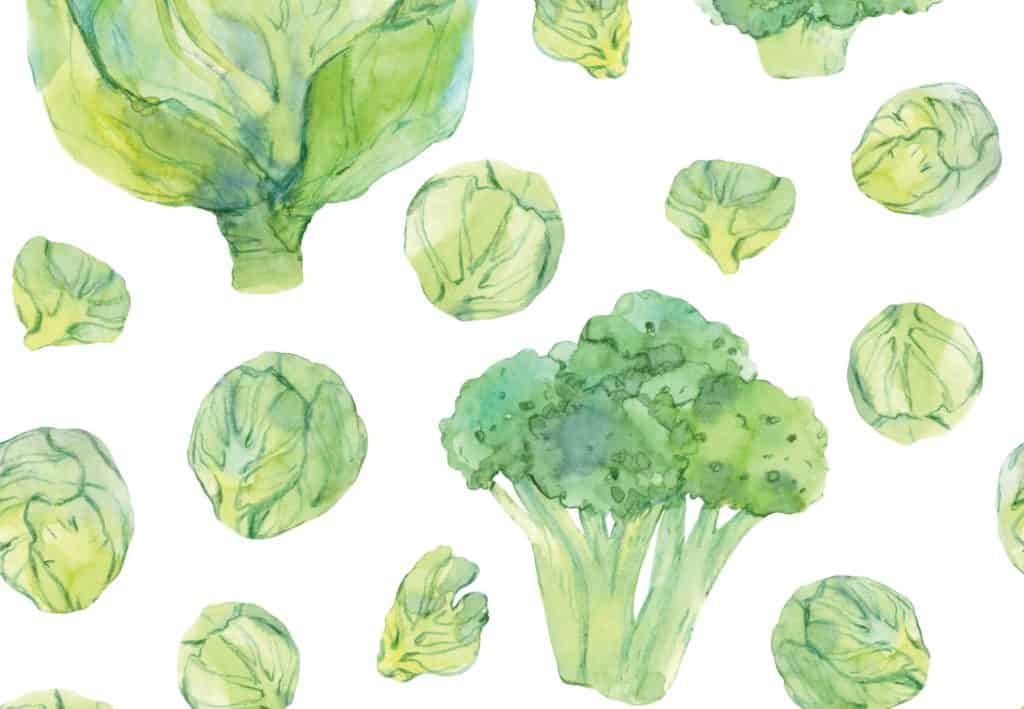
What do kale, broccolini, and Brussels sprouts have in common? They are all brassicas, which, botanically speaking, are rooted in cabbage leaves native to coastal southwestern Europe. From those wild greens, ancient gardeners and modern scientists alike have bred cultivars that play up various attributes of the species—much to eaters’ delights.
As far back as 400 BC, a preference for brassica leaves in Greece led farmers to save seeds from large-leafed plants and sow them in subsequent years into the crop we now know as kale. In the first century AD, selection for kale plants with tightly bunched leaves resulted in modern day cabbage. About the same time in Germany, a preference for thicker stems gave birth to kohlrabi. In the 1600s, a European preference for eating immature buds led both broccoli and cauliflower. A Belgian desire for bigger buds in the 18th century gave us Brussels sprouts. In the 1990s, a Japanese seed company introduced broccolini, a sweet, tender hybrid of broccoli and Chinese cabbage. And in 2010, a kale and Brussels sprout cross was introduced by British seed company Tozer as kalettes.
“There is great genetic plasticity in this genus,” says Jim Myers, professor of vegetable breeding and genetics at Oregon State University in Corvallis. But Meyers says most breeding dollars are now spent on improving production of mainstream brassica crops, mainly broccoli.
Cornell University horticulturalist Thomas Björkman is the lead researcher for the Eastern Broccoli Project, a scientific and agricultural effort looking to create new variants of broccoli that can grow year-round east of the Mississippi River, to reduce the region’s dependency on broccoli from California. But Björkman is more bullish than Myers on work being done to bring more novel brassicas to diners’ plates. He points to colleague Philip Griffiths’ work in developing interesting new kales and broccoli-kale crosses for both the baby greens and bunched leaves markets. “He is going for color, texture, flavor and loft. Chefs like some loft in their salads!” says Björkman.
When pairing a brassica with cheese, these scientists say factoring in the vegetable’s pungent sulfuric odor and sweet taste is key. “For me, a good cheese match is one that has some complementary compounds but is not bitter at all,” Björkman. “A fully ripe Camembert, for example. The nutty character of a tomme or Gruyère works nicely as well.” We follow Björkman’s suggestion in this recipe for white pizza with your choice of brassica, red onion and Gruyère.
Brassica and Gruyère Pizza
Ingredients
- 2 tablespoons butter
- 3 tablespoons flour
- 1 cup whole or low-fat milk warmed
- ½ teaspoon mustard
- 6 ounces grated Gruyère cheese
- Salt and pepper
- Cornmeal or semolina
- Uncooked dough for one 14-inch pizza
- Olive oil
- 2 cups cooked and roughly chopped brassicas such as grilled broccoli, sautéed kale, steamed broccolini, or roasted Brussels sprouts, roughly chopped
- ½ small red onion thinly sliced
Instructions
- ►Place a pizza stone in the oven and preheat oven to 400°F.
- ►Melt butter in a small saucepan over medium heat. Whisk in flour to make a roux. Cook roux for two minutes, stirring constantly. Slowly add warm milk, stirring constantly. Whisk in mustard. Simmer sauce until it thickens, about 2 minutes. Slowly add 3 ounces of cheese, stirring after each addition until sauce is smooth. Remove from heat and season to taste with salt and pepper.
- ►Sprinkle a pizza peel with cornmeal or semolina. Roll out pizza dough into a 14-inch circle and place on peel. Use a pastry brush to brush dough with olive oil. Spoon prepared cheese sauce onto crust and spread evenly to edges. Scatter chopped brassicas, sliced onion and remaining grated gruyère over pizza. Slide pizza off the peel and onto the pizza stone. Bake until crust is golden brown and crispy, and cheese sauce is bubbling. Remove from oven and cool for 3 minutes
- before cutting and serving.




